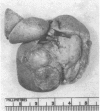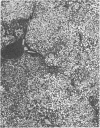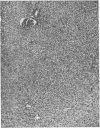Abstract
The author discusses the role of “natural” hepatotoxic substances, derived from plants and fungi, in the etiology of liver disease, especially in tropical and subtropical countries. The hazards involved in even the occasional use of natural hepatotoxins and the difficulty in tracing the causative factors of chronic diseases are illustrated by the example of the pyrrolizidine (Senecio) alkaloids. The ingestion by rats of a single dose of these alkaloids can induce chronic liver lesions and even hepatoma which, however, may not become apparent for 1½-2½ years.
It is suggested that, however varied the chemical structures of the various hepatocarcinogens, they may all affect an essential cell constituent (e.g., a “mitotic hormone”), possibly of a steroidal nature, each substance interfering with a particular stage of its biosynthesis. “Natural” toxic factors may also be responsible for some other chronic diseases, especially those which are mainly encountered in, or restricted to, certain pastoral communities. In view of the greater susceptibility of the suckling young and the foetus than of adults to hepatotoxins, it would appear more promising to attempt to trace the causative agents of liver disease in children than in adults, in whom disease takes much longer to develop.
Full text
PDF










Images in this article
Selected References
These references are in PubMed. This may not be the complete list of references from this article.
- ASPREY G. F., THORNTON P. Medicinal plants of Jamaica. III. West Indian Med J. 1955 Jun;4(2):69–82. [PubMed] [Google Scholar]
- CLARK A. M. The mutagenic activity of some pyrrolizidine alkaloids in Drosophila. Z Vererbungsl. 1960;91:74–80. doi: 10.1007/BF00890000. [DOI] [PubMed] [Google Scholar]
- COOK J. W., DUFFY E., SCHOENTAL R. Primary liver tumours in rats following feeding with alkaloids of Senecio jacobaea. Br J Cancer. 1950 Dec;4(4):405–410. doi: 10.1038/bjc.1950.39. [DOI] [PMC free article] [PubMed] [Google Scholar]
- CULVENOR C. C., DANN A. T., DICK A. T. Alkylation as the mechanism by which the hepatotoxic pyrrolizidine alkaloids act on cell nuclei. Nature. 1962 Aug 11;195:570–573. doi: 10.1038/195570a0. [DOI] [PubMed] [Google Scholar]
- GREEN C. R., CHRISTIE G. S. Malformations in foetal rats induced by the pyrrolizidine alkaloid, heliotrine. Br J Exp Pathol. 1961 Aug;42:369–378. [PMC free article] [PubMed] [Google Scholar]
- HEMINGWAY J. T. Influence of plasma proteins in the control of mitosis-rates in generating liver. Nature. 1961 Aug 12;191:706–707. doi: 10.1038/191706b0. [DOI] [PubMed] [Google Scholar]
- HEMINGWAY J. T. Withdrawal of inhibition of mitosis as a mechanism influencing normal and pathological growth. Nature. 1960 Jan 9;185:106–107. doi: 10.1038/185106a0. [DOI] [PubMed] [Google Scholar]
- LACASSAGNE A., BUU-HOI N. P., ZAJDELA F. Carcinogenic activity of apocholic acid. Nature. 1961 Jun 10;190:1007–1008. doi: 10.1038/1901007a0. [DOI] [PubMed] [Google Scholar]
- POPJAK G., CORNFORTH J. W. The biosynthesis of cholesterol. Adv Enzymol Relat Subj Biochem. 1960;22:281–335. doi: 10.1002/9780470122679.ch7. [DOI] [PubMed] [Google Scholar]
- RATNOFF O. D., MIRICK G. S. Influence of sex upon the lethal effects of an hepatotoxic alkaloid, monocrotaline. Bull Johns Hopkins Hosp. 1949 Jun;84(6):507–525. [PubMed] [Google Scholar]
- SCHOENTAL R., BENSTED J. P. EFFECTS OF WHOLE BODY IRRADIATION AND OF PARTIAL HEPATECTOMY ON THE LIVER LESIONS INDUCED IN RATS BY A SINGLE DOSE OF RETRORSINE, A PYRROLIZIDINE (SENECIO) ALKALOID. Br J Cancer. 1963 Jun;17:242–251. doi: 10.1038/bjc.1963.34. [DOI] [PMC free article] [PubMed] [Google Scholar]
- SCHOENTAL R., HEAD M. A., PEACOCK P. R. Senecio alkaloids; primary liver tumours in rats as a result of treatment with (1) a mixture of alkaloids from S. jacobaea Lin.; (2) retrorsine; (3) isatidine. Br J Cancer. 1954 Sep;8(3):458–465. doi: 10.1038/bjc.1954.49. [DOI] [PMC free article] [PubMed] [Google Scholar]
- SCHOENTAL R., HEAD M. A. Progression of liver lesions produced in rats by temporary treatment with pyrrolizidine (senecio) alkaloids, and the effects of betaine and high casein diet. Br J Cancer. 1957 Dec;11(4):535–544. doi: 10.1038/bjc.1957.65. [DOI] [PMC free article] [PubMed] [Google Scholar]
- SCHOENTAL R. Hepatotoxic action of pyrrolizidine (Senecio) alkaloids in relation to their structure. Nature. 1957 Feb 16;179(4555):361–363. doi: 10.1038/179361a0. [DOI] [PubMed] [Google Scholar]
- SCHOENTAL R. Herbal medicines and liver disease. J Exp Med Sci. 1961 Mar;4:126–135. [PubMed] [Google Scholar]
- SCHOENTAL R. Liver changes and primary liver tumours in rats given toxic guinea pig diet (M.R.C. Diet 18). Br J Cancer. 1961 Dec;15:812–815. doi: 10.1038/bjc.1961.92. [DOI] [PMC free article] [PubMed] [Google Scholar]
- SCHOENTAL R. Liver lesions in young rats suckled by mothers treated with the pyrrolizidine (Senecio) alkaloids, lasiocarpine and retrorsine. J Pathol Bacteriol. 1959 Apr;77(2):485–495. doi: 10.1002/path.1700770220. [DOI] [PubMed] [Google Scholar]
- SCHOENTAL R., MAGEE P. N. Further observations on the subacute and chronic liver changes in rats after a single dose of various pyrrolizidine (Senecio) alkaloids. J Pathol Bacteriol. 1959 Oct;78:471–482. doi: 10.1002/path.1700780213. [DOI] [PubMed] [Google Scholar]
- SCHOENTAL R., MATTOCKS A. R. Hepatotoxic activity of semi-synthetic analogues of pyrrolizidine alkaloids. Nature. 1960 Mar 19;185:842–843. doi: 10.1038/185842a0. [DOI] [PubMed] [Google Scholar]
- SCHOENTAL R. The chemical aspect of seneciosis. Proc R Soc Med. 1960 Apr;53:284–288. [PubMed] [Google Scholar]
- URAGUCHI K. Isolation of two toxic agents, luteoskyrin and chlorine-containing peptide, from the metabolites of Penicillium islandicum Sopp, with some properties thereof. Jpn J Exp Med. 1961 Feb;31:19–46. [PubMed] [Google Scholar]
- URAGUCHI K., SAKAIF, TSUKIOKA M., NOGUCHI Y., TATSUNO M. Acute and chronic toxicity in mice and rats of the fungus mat of Penicillium islandicum Sopp added to the diet. Jpn J Exp Med. 1961 Dec;31:435–461. [PubMed] [Google Scholar]
- WIELAND T., WIELAND O. Chemistry and toxicology of the toxins of Amanita phalloides. Pharmacol Rev. 1959 Mar;11(1):87–107. [PubMed] [Google Scholar]











